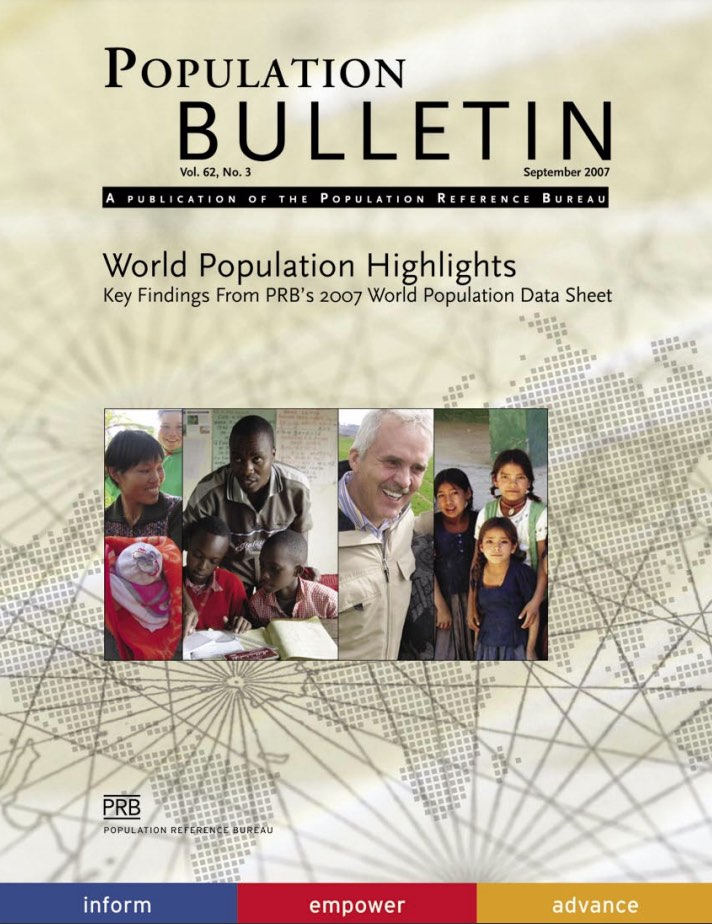World Population Highlights 2007: Urbanization
(September 2007) The world is on the verge of a shift: from predominantly rural to mainly urban.
(September 2007) The world is on the verge of a shift: from predominantly rural to mainly urban.

Carbon dioxide emissions have grown dramatically in the past century because of human activity, chiefly the use of fossil fuels such as oil and coal, as well as changes in land use such as cutting down forests.
(2008) The U.S. population is aging: The ratio of elderly to the working-age population in the United States will roughly double over the next few decades, straining the finances of the U.S. Social Security system and other government programs.

By law, the U.S. government is required to count the number of people living in the United States every 10 years.
(2006) Undernutrition remains a devastating problem in many developing countries—affecting over 815 million people and causing more than one-half of all child deaths.1 But while governments in these countries continue efforts to reduce hunger, that focus neglects the growing rate of overweight and obesity in the developing world.2 Increasingly, health systems in poor countries are simultaneously confronting under- and overnutrition—not only at the national level, but also within households.
(2003) Selon l'Organisation mondiale de la Santé (OMS), chaque année près de 300 millions de personnes sont atteintes du paludisme dans le monde, avec pour résultat plus d'un million de décès.

Project: Center for Public Information on Population Research (CPIPR)
In 2020, the U.S. TFR dropped to 1.64, the lowest level ever recorded.
PRB was a partner on Evidence to End FGM/C: Research to Help Girls and Women Thrive, a UKAID-funded research program to end female genital mutilation/cutting (FGM/C) within one generation.
(2002) According to the World Health Organization (WHO), around 300 million people worldwide suffer from malaria each year resulting in at least 1 million deaths.

Project: Indicators of Well-Being for California's Children
Medicaid provides health insurance coverage to more people than any other single program in the United States, with coverage for low-income children, adults, seniors, and those with disabilities.